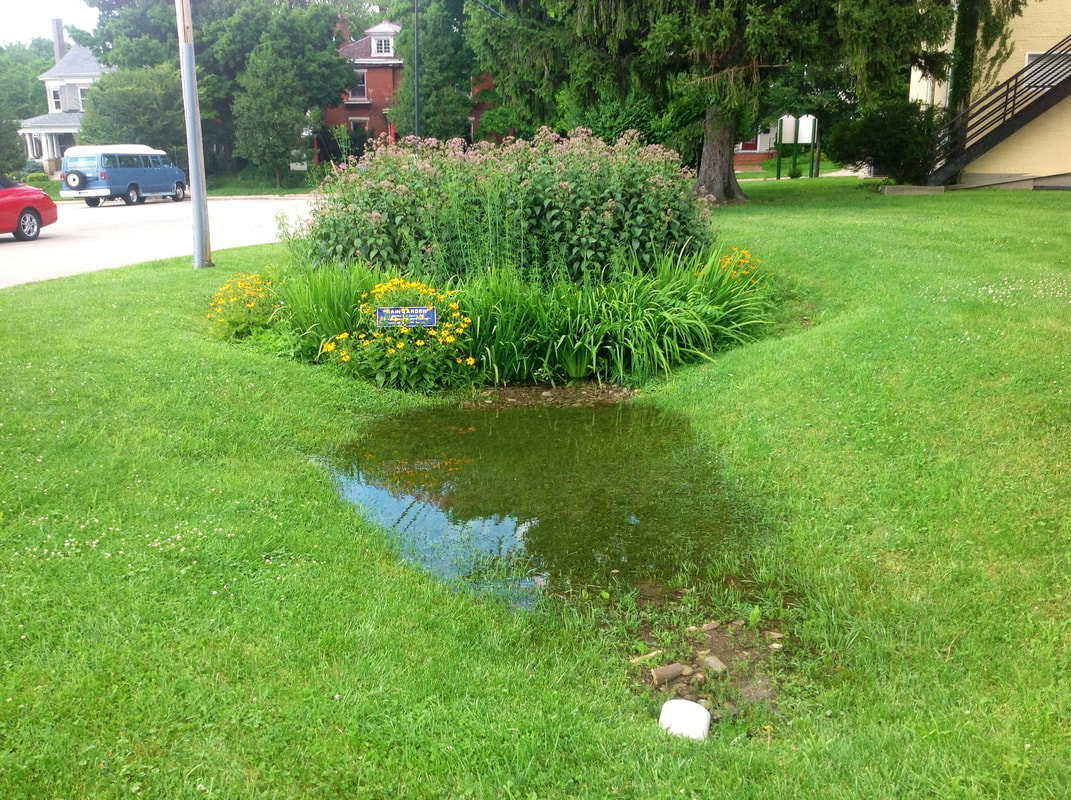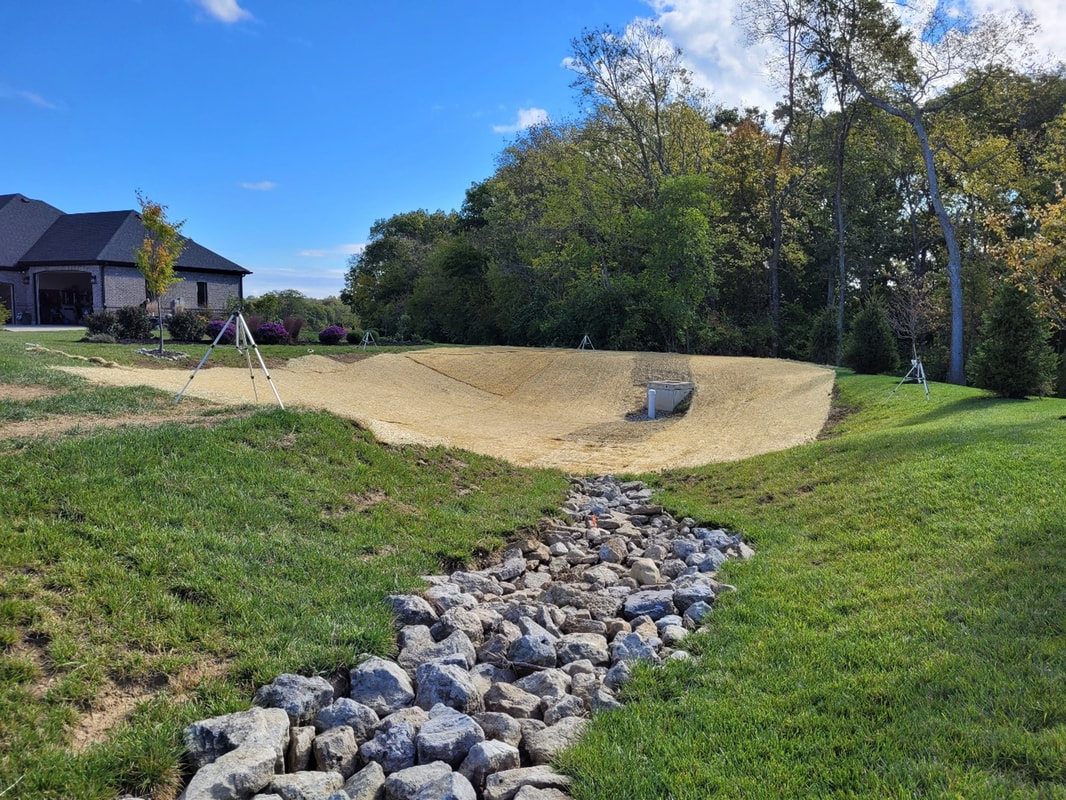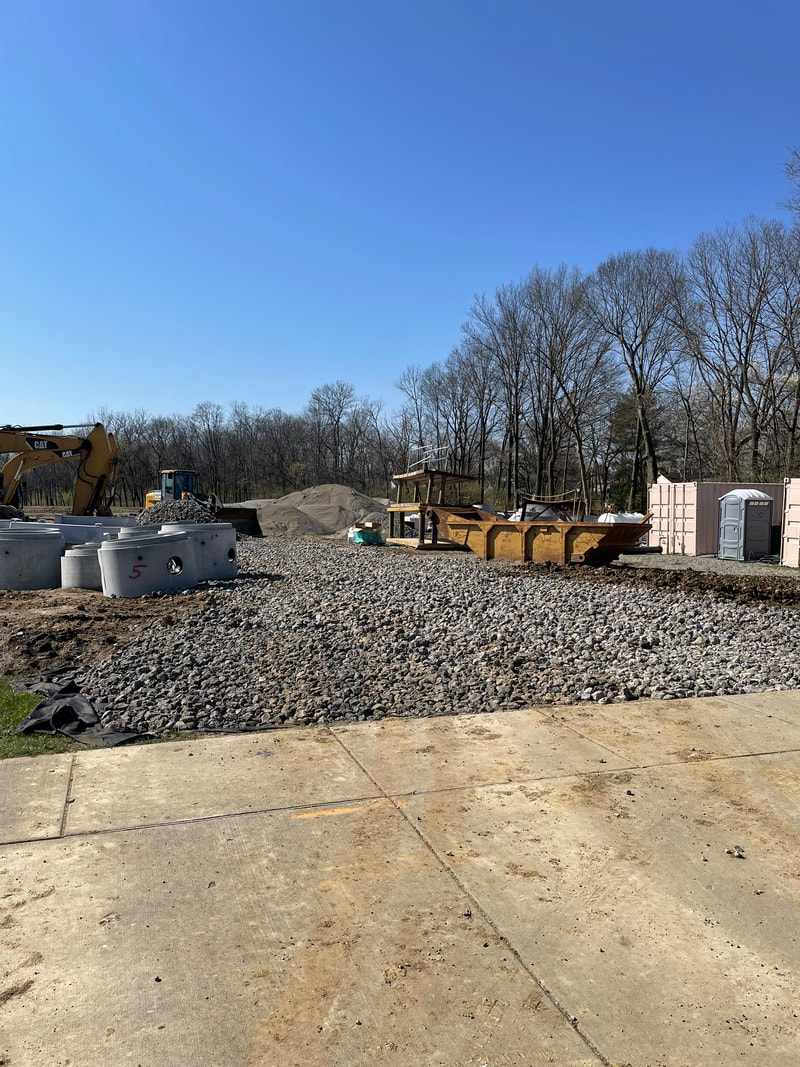|
As defined by the Federal Environmental Protection Agency, Low Impact Development (LID) refers to a variety of practices designed to mimic natural drainage to manage stormwater flow. The overarching goal is to minimize the impact of development on the natural landscape and environment. In contrast to high impact development with mostly impervious surface and grey infrastructure, these practices encourage stormwater percolation into the soil. In addition to managing stormwater volume, this helps to filter out pollutants that may be picked up by stormwater as it makes its way to natural waterways. What are the Benefits of LID? Economic
Yes! In 2020, Warren County updated its stormwater regulations and technical design guide to allow for green infrastructure practices for water quality best management such as wetlands, permeable pavements, infiltration practices, and bioretention. Not only is low impact development permissible in the county, but with the numerous benefits, it is strongly encouraged!
Other examples of Green Infrastructure that can be used as part of a Low Impact Development plan can be found here: https://www.epa.gov/green-infrastructure/what-green-infrastructure
Additional Resources www.warrenswcd.com/rain-gardens.html https://www.epa.gov/nps/urban-runoff-low-impact-development http://www.wceo.us/
1 Comment
One of the requirements for stormwater pollution prevention plans (SWPPPs) is to include an implementation schedule for major construction operations. This includes things like clearing, grubbing, excavating, grading, utility installation, and other similar activities. The Ohio EPA Rainwater and Land Development manual includes a table of what this general sequence should look like: https://epa.ohio.gov/static/Portals/35/storm/technical_assistance/6-24-09RLDCh8.pdf (pg 13) There are steps that should be taken as early in the construction process as possible to avoid problems with sediment and erosion control later in the project. Let’s breakdown those crucial early steps:
Generally, the sooner these controls are implemented, the better the outcome for sediment and erosion management. It’s always better to work proactively rather than to have to fix problems that arise from waiting too long to implement or correct controls. Phased Disturbance is another tool to keep in mind when developing SWPPPs and generating a construction sequence. This practice minimizes the amount of grading done at one time. Planning smaller earth moving efforts allows for parts of the site to remain undisturbed and stabilized while other parts are being actively worked. Planning disturbance in this way helps reduce the amount of sediment that controls manage at one time, which increases the effectiveness of these practices. BMP Spotlight Example from the Field: Early Construction Process Communication and Implementation Monarch Homes and Diggit Excavating met with Warren Co SWCD at a pre-construction meeting with the City of Lebanon where the requirements and sequence of sediment and erosion controls measures were discussed. Since that meeting, the team has been in constant contact with Warren Co SWCD, proving updates on initial groundbreaking and the control installation timelineas well as any changes to controls being used on the construction site. As soon as clearing and grading work was set to begin, there was a proper construction entrance in place and silt fence around the clearing boundaries that was supplemented with a mulch berm from the on-site clearing. The basin was dug as part of the first phase as well. The basin will be temporarily stabilized and have a skimmer installed on the outlet once installed. We asked our friends at Diggit Excavating for their take on how communication has helped with the development process from their perspective:
This is a great example of communication between our agency and developers and contractors on projects and how compliance can begin right out of the gate as a new project begins. This proactive approach helps to avoid many complications later in the construction process.
|
Details
Urban team BLOGEvery month, the Warren Co SWCD Urban Team dives deep into the world of land development as it relates to stormwater pollution prevention. The blog covers topics like erosion & sediment control best management practices (BMPs), state and local regulations, retention/detention basins, and the conservation of our natural resources. Stay up to date with Development Digest by signing up for WCSWCD Urban eNews!
Categories
All
Archives
July 2024
|
|
|
Contact:PHONE: (513) 695 - 1337
EMAIL: [email protected] HOURS: Monday - Friday 7:30am - 4:00pm (except holidays) Connect:Warren County Soil & Water Conservation District Copyright © 2016
Warren SWCD Privacy Notice. Emails are serviced by Constant Contact. Constant Contact's Privacy Notice. |



 RSS Feed
RSS Feed
